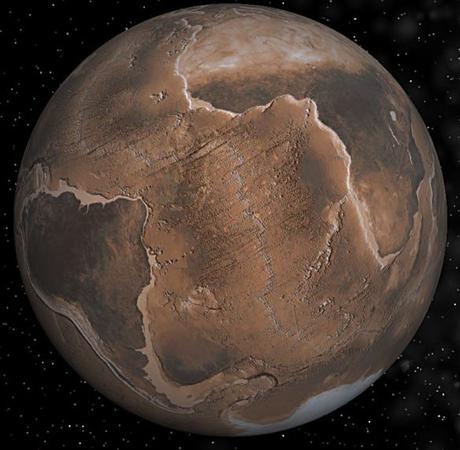GR: Here are the arguments for near-term-extinction of humanity and most complex life on Earth. Personally, I can’t believe that we will all be dead in 10 years. I think it’s a mental block of some kind. Nevertheless, I feel compelled to read the arguments. Things are going to get bad, but I know that without a catastrophic methane release, it may be centuries, before the last shreds of our civilization disappear. It’s probably too late to prevent our extinction, but understanding the arguments lets us see how grave our predicament and it might help us support the right attempts to dampen the rate of climate change.

Almost lifeless Earth.
“As I’ve pointed out previously, I doubt there will be a human on Earth by mid-2026. Indeed, I doubt there will be complex life on this planet by then. It’ll be a small world, as was the case in the wake of each of the five prior Mass Extinction events on Earth. Bacteria, fungi, and microbes will dominate.
“As I’ve pointed out repeatedly, humans will lose habitat on Earth before the last human dies. The final human probably will die after running out of canned food in a bunker. And he or she will not know human extinction has occurred.
“According to the Pentagon’s JASON Group, the situation for life on Earth will be far worse than I have ever described. A well-informed insider there wrote on 19 December 2016: “THE JASON GROUP at the Pentagon is getting new data (upon my constant requests) that the effect of over 450 reactors melting down will most likely destroy the Ozone layers. Rather than going Venus Earth will end up more like Mars. Very dead with almost no chance to regenerate an atmosphere. Report to be published in 2017.”
“The ice-free Arctic predicted by the U.S. Naval Postgraduate School in 2016, + 3 years, seems likely in 2017. Arctic ice is very fragile. Regardless when it arrives, the near-term ice-free Arctic will be experienced by humans for the first time. Ever. This event might trigger the 50-Gt burst of methane forecast by Shakhova and colleagues at the European Geophysical Union annual meeting in 2008 (“we consider release of up to 50 Gt of predicted amount of hydrate storage as highly possible for abrupt release at any time”). I reasonably use the ice-free Arctic as a proxy for this first burst of atmospheric methane. After all, it’s been “highly possible for abrupt release at any time” for nearly a decade. In May 2015, Shakhova lied about the research group’s earlier statement about an abrupt release of methane — when she could have easily retracted the statement — saying, “We never stated that 50 gigatonnes is likely to be released in near or distant future.”
“The first 50-gigatonne burst of methane described by Shakhova et al. translates to a global temperature rise of 1.3 C, which causes civilization to collapse because grains cannot be grown at scale. Industrial civilization, as with its predecessors, requires grain production and storage. This abrupt rise in temperature would be felt within a few weeks in the Northern Hemisphere — where nearly all civilization-supporting grains are grown — and within a year throughout the world. It would take Earth’s global-average temperature well beyond the point that has supported humans in the past. Ever.Lack of global dimming adds another ~3 C. Earth is then ~6 C above the 1750 baseline by the following spring (2018?). About 2/3 of the temperature rise comes within a few months. I doubt there’s habitat for humans or many other animals at that point. After all, the slow rise in global-average temperature documented so far outstrips the ability of vertebrates to adapt by more than 10,000 times.” –Guy McPherson (More: Faster than Expected – Nature Bats Last).

